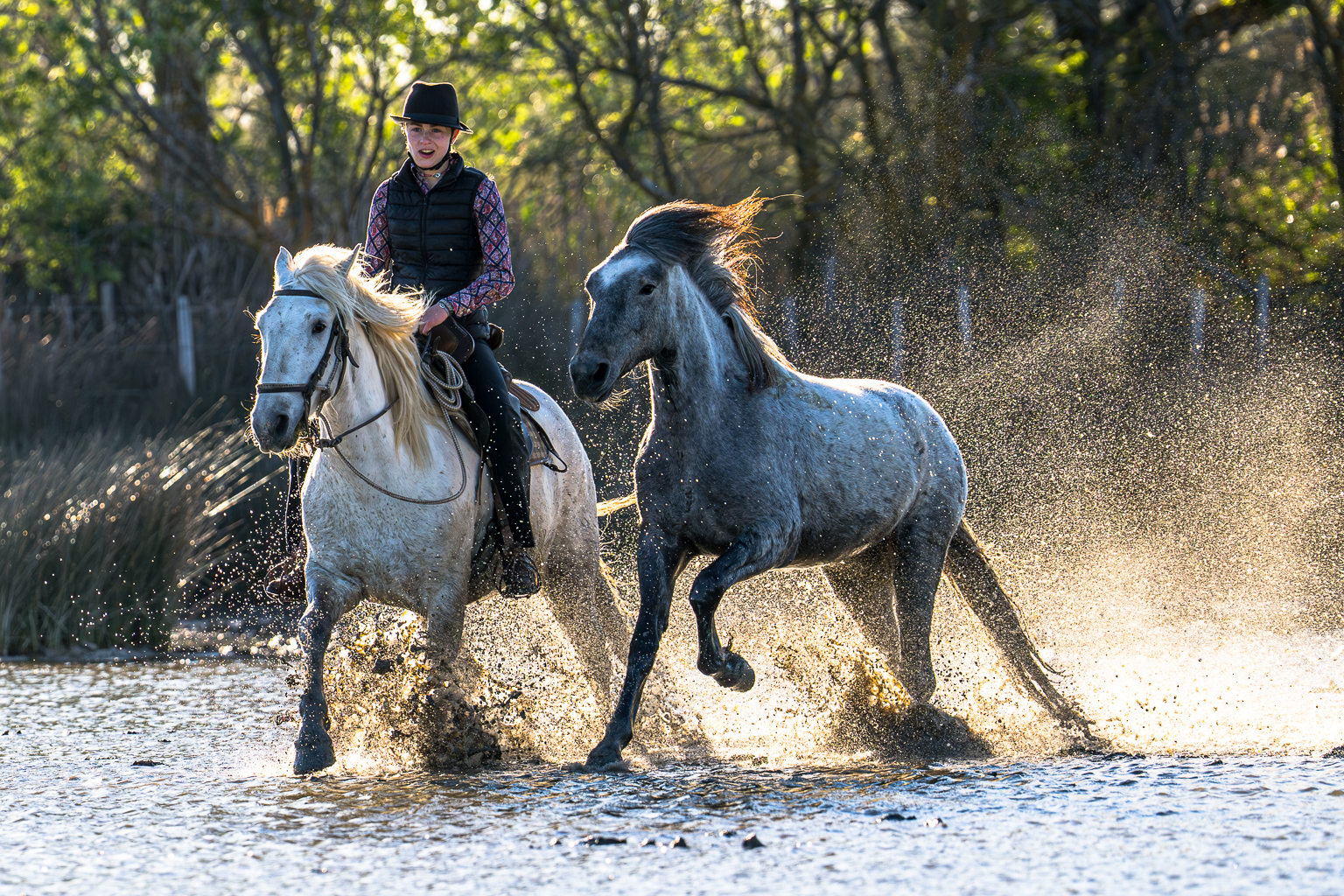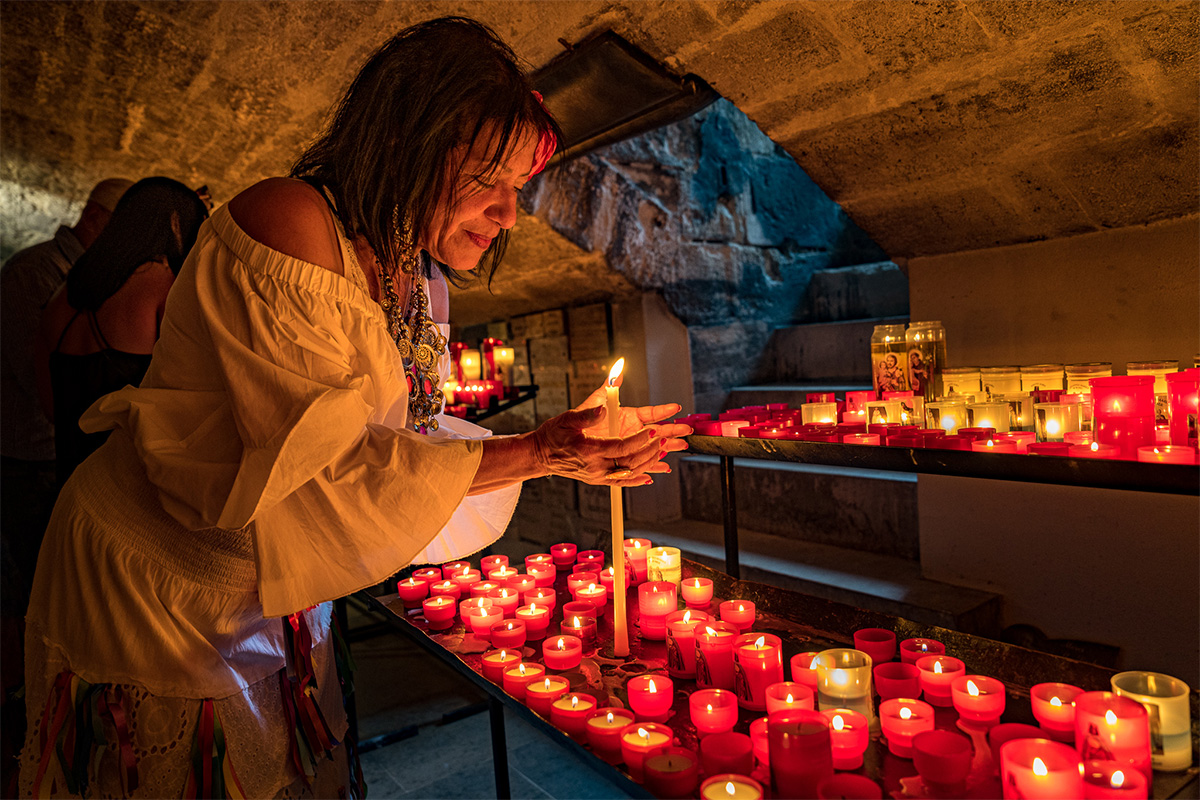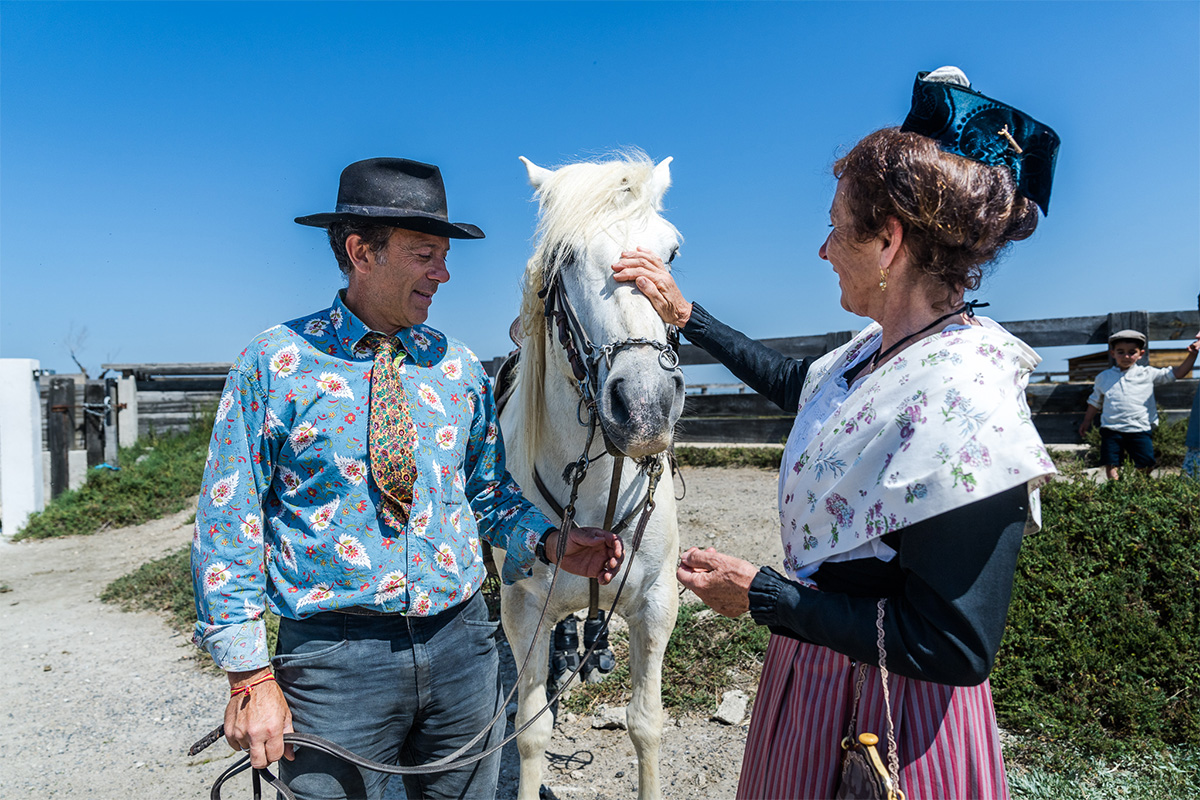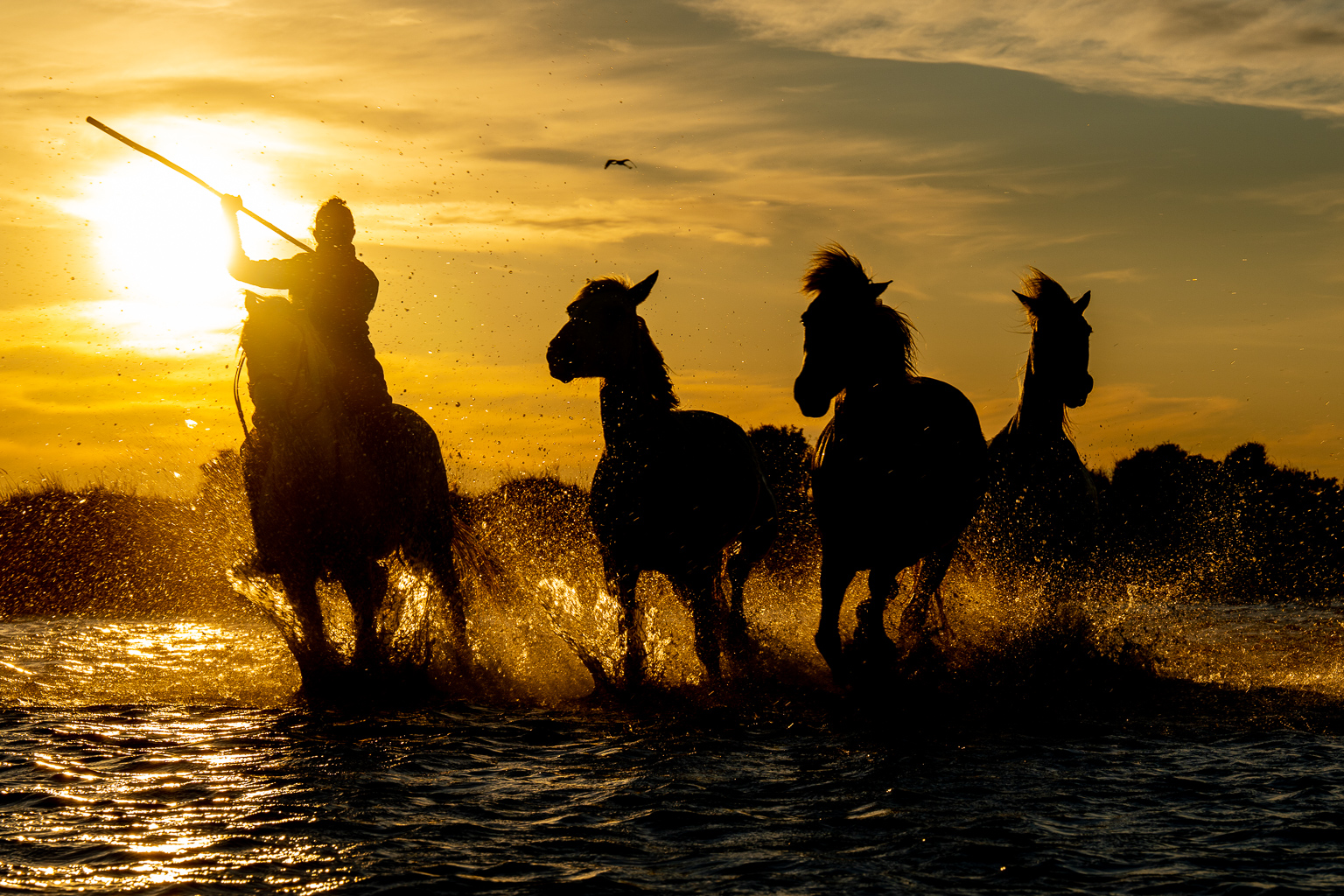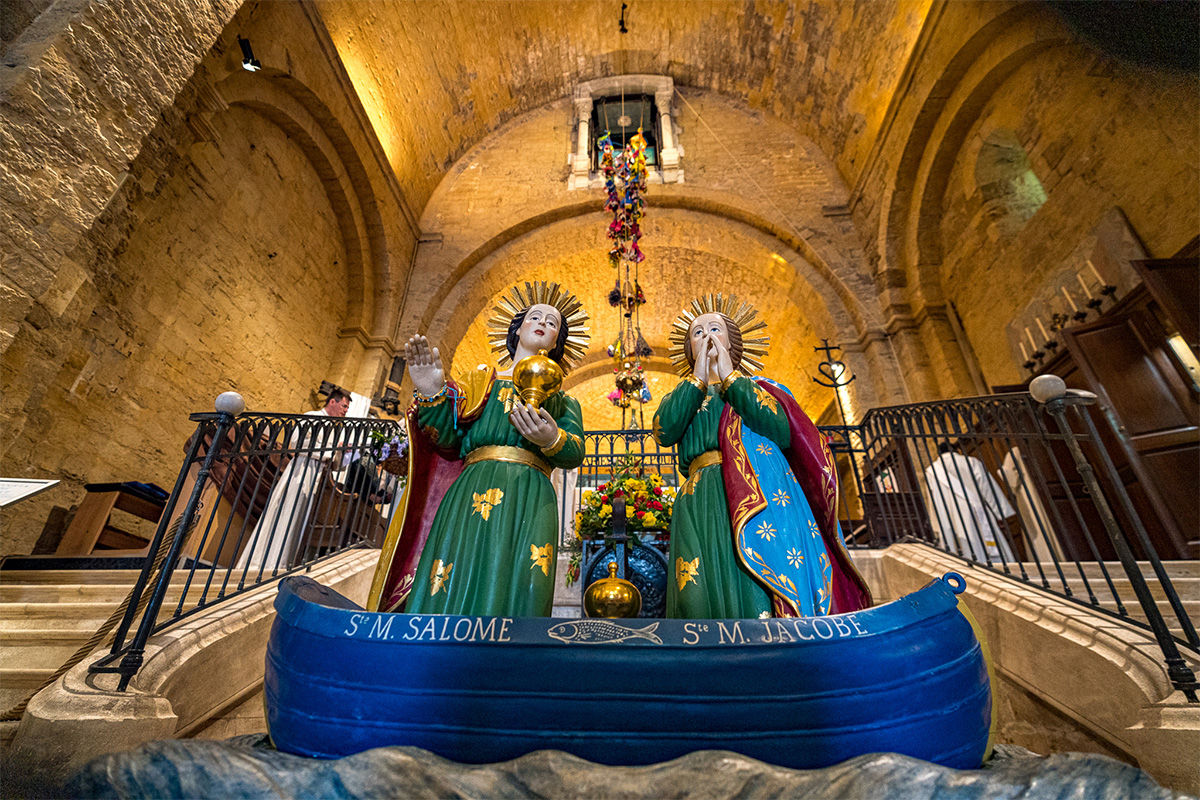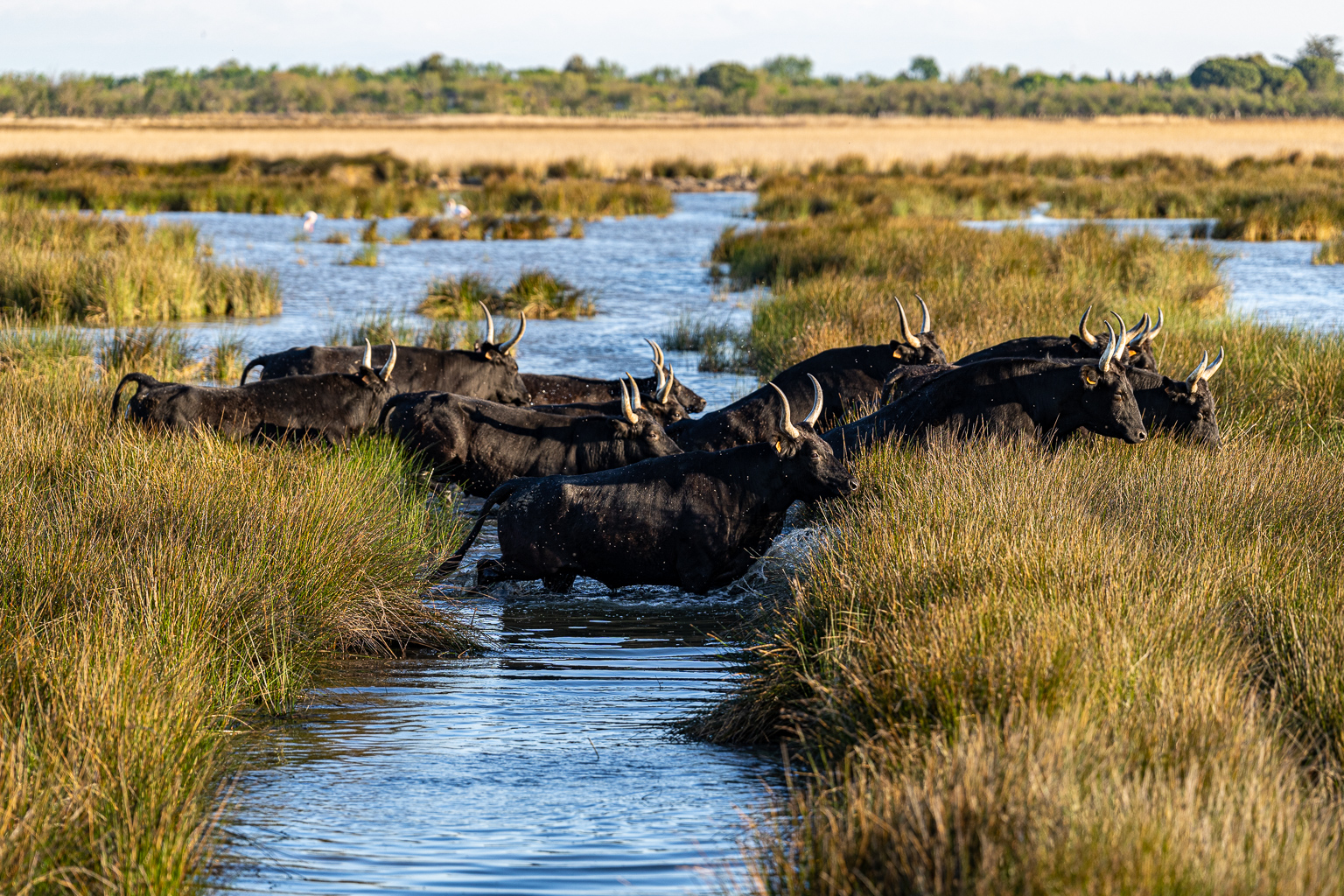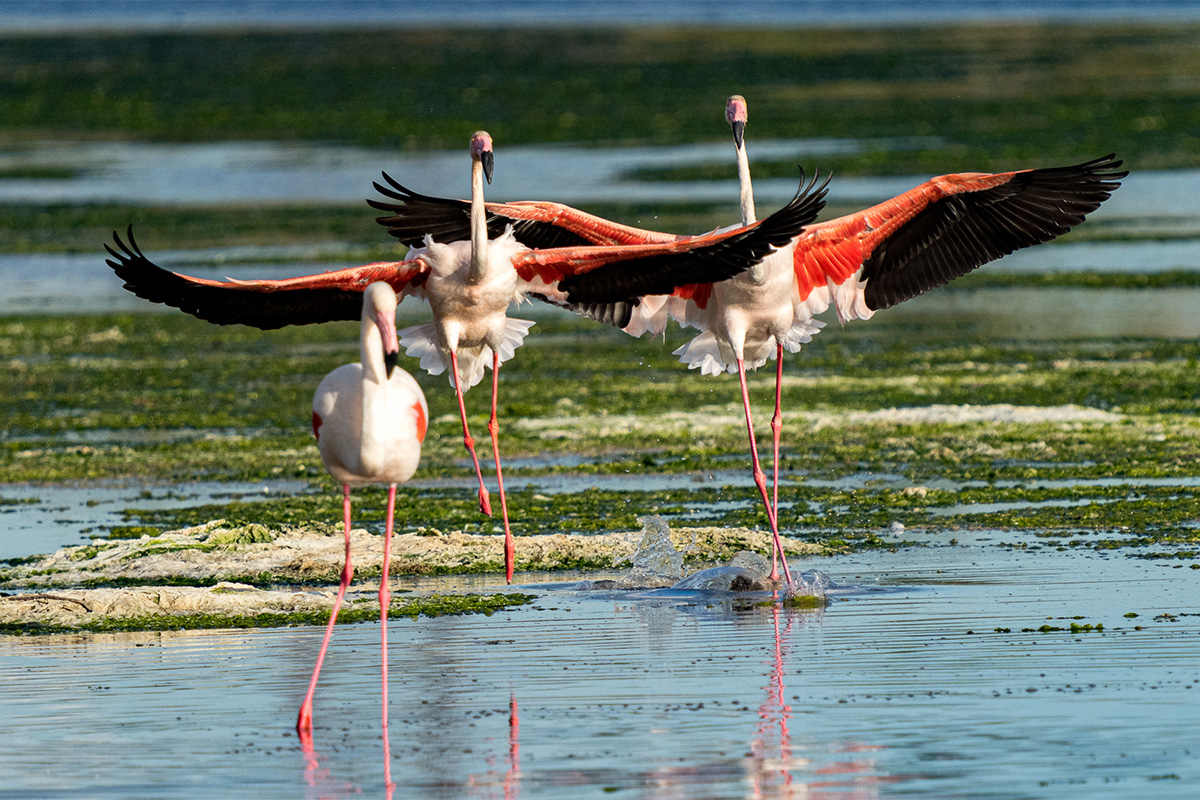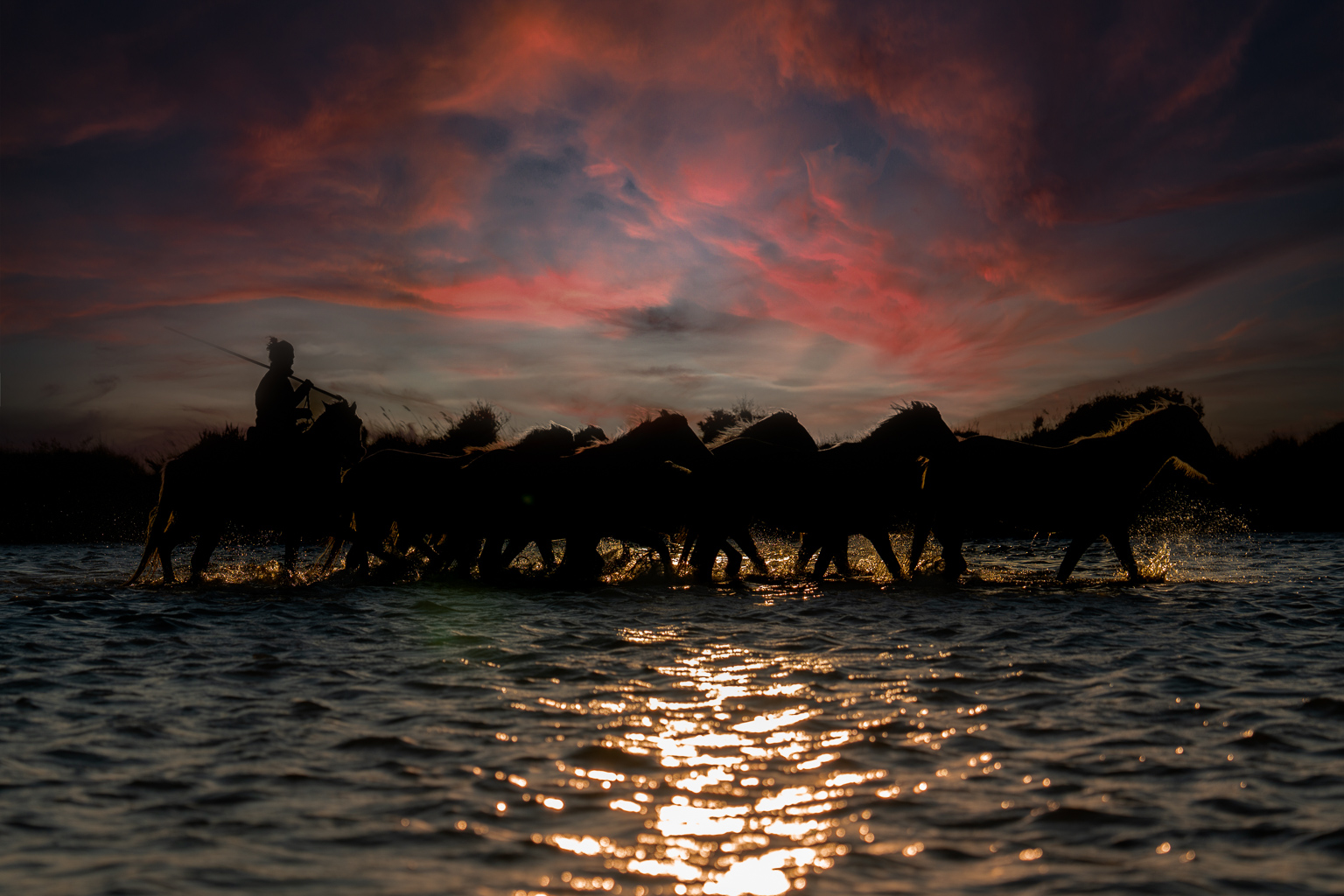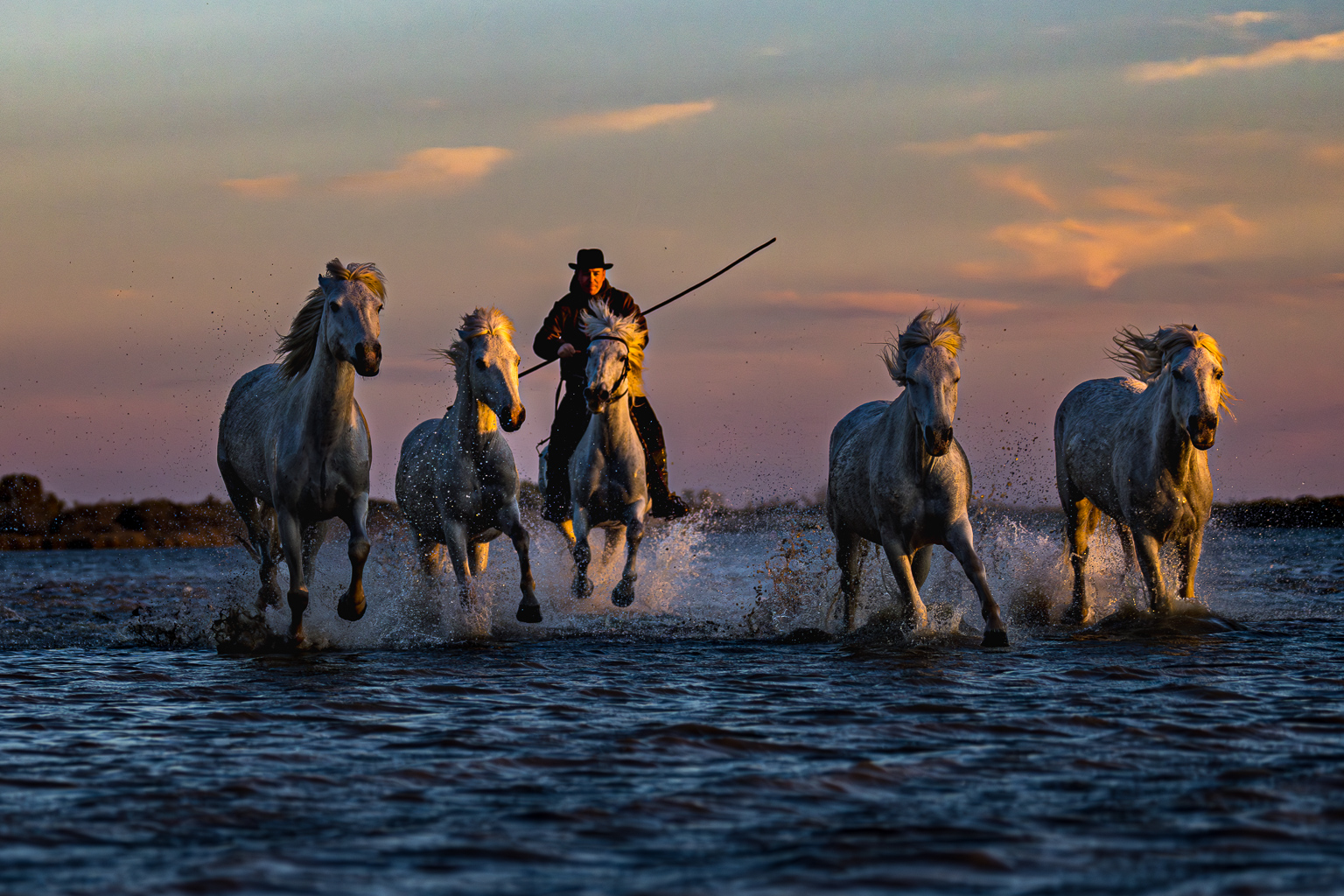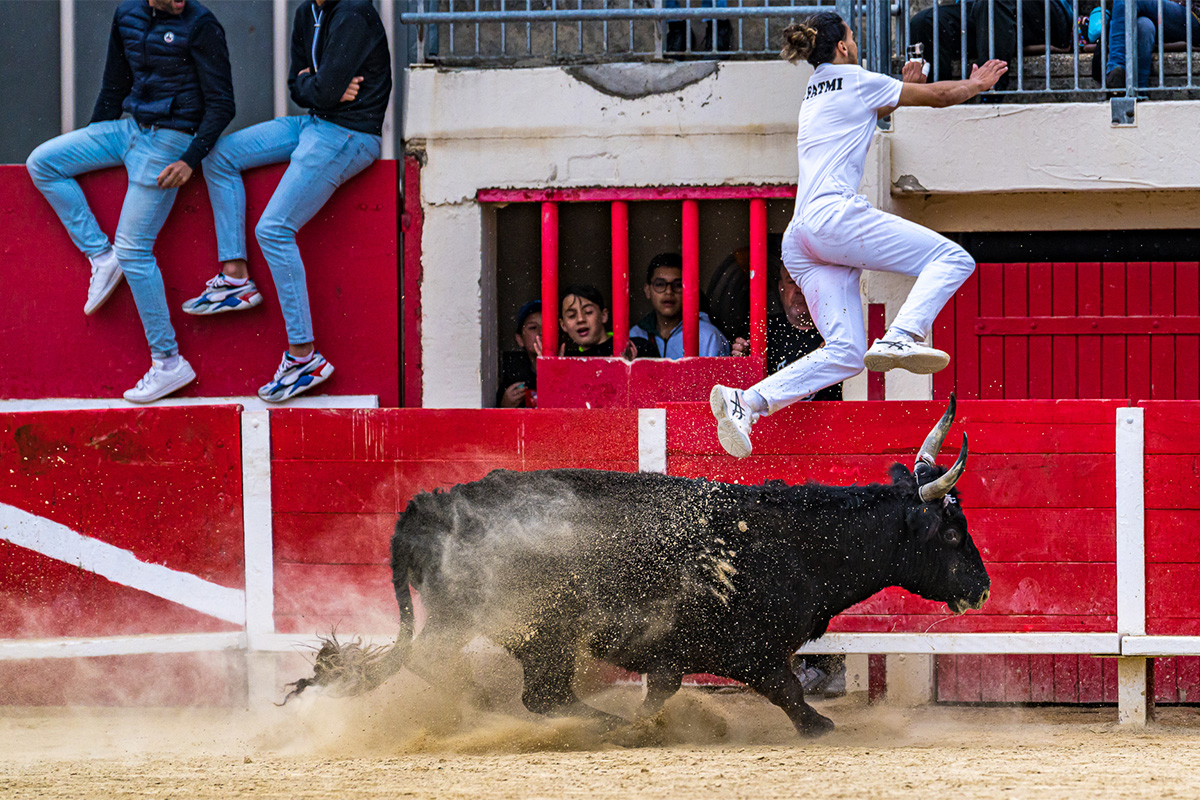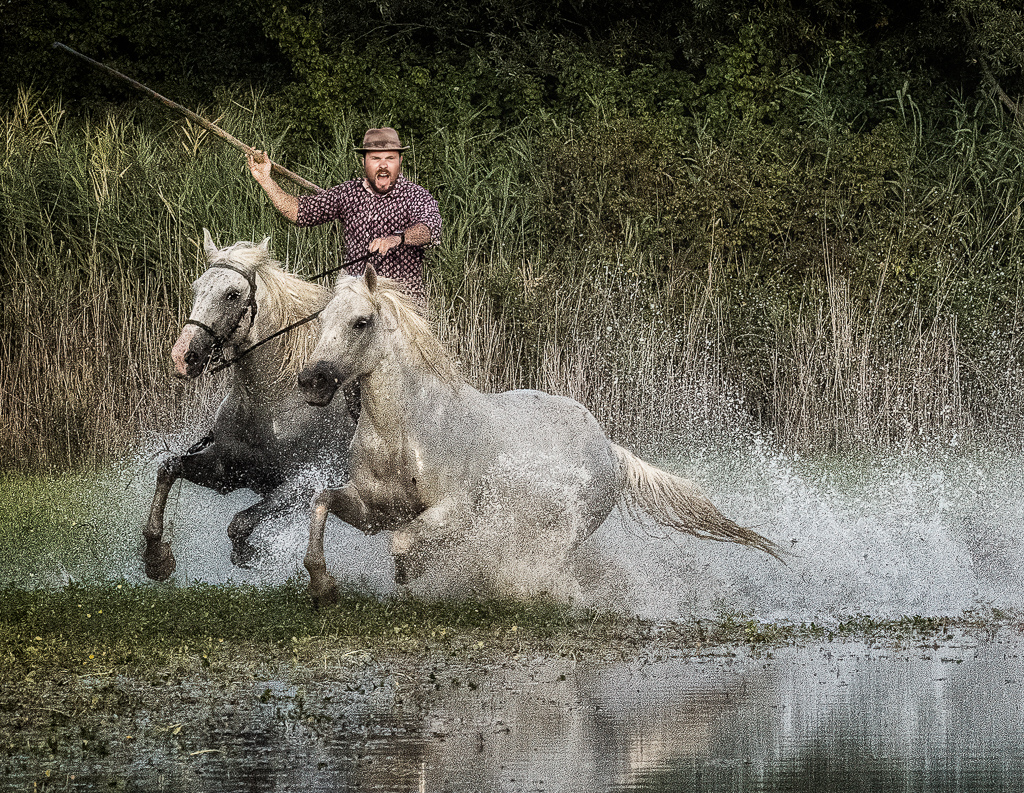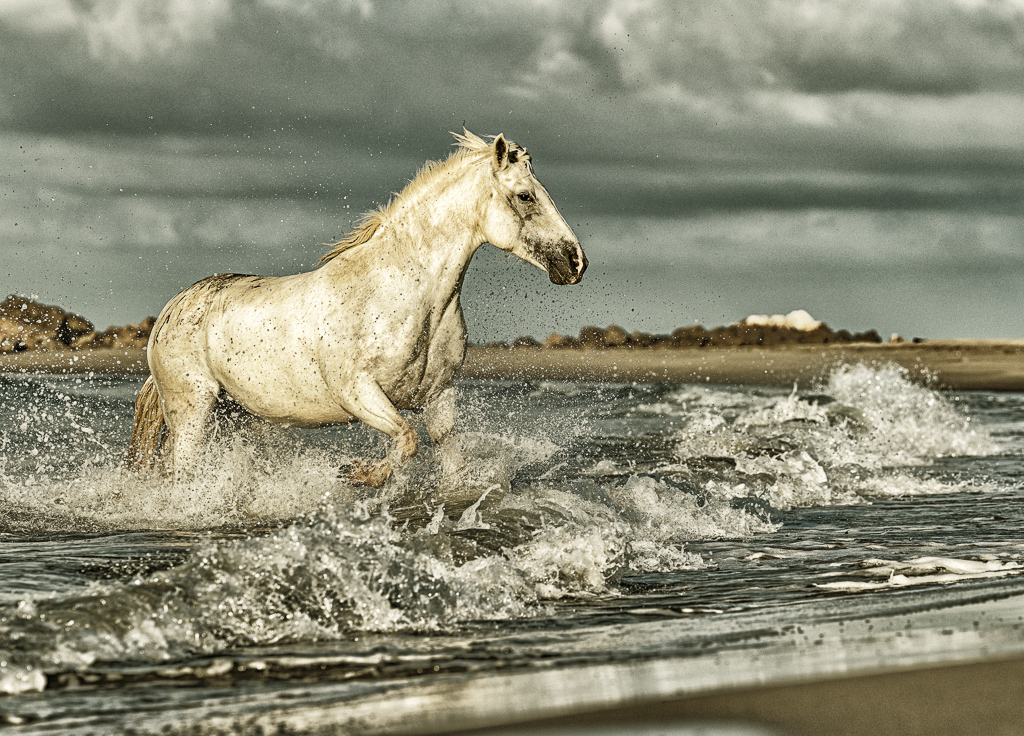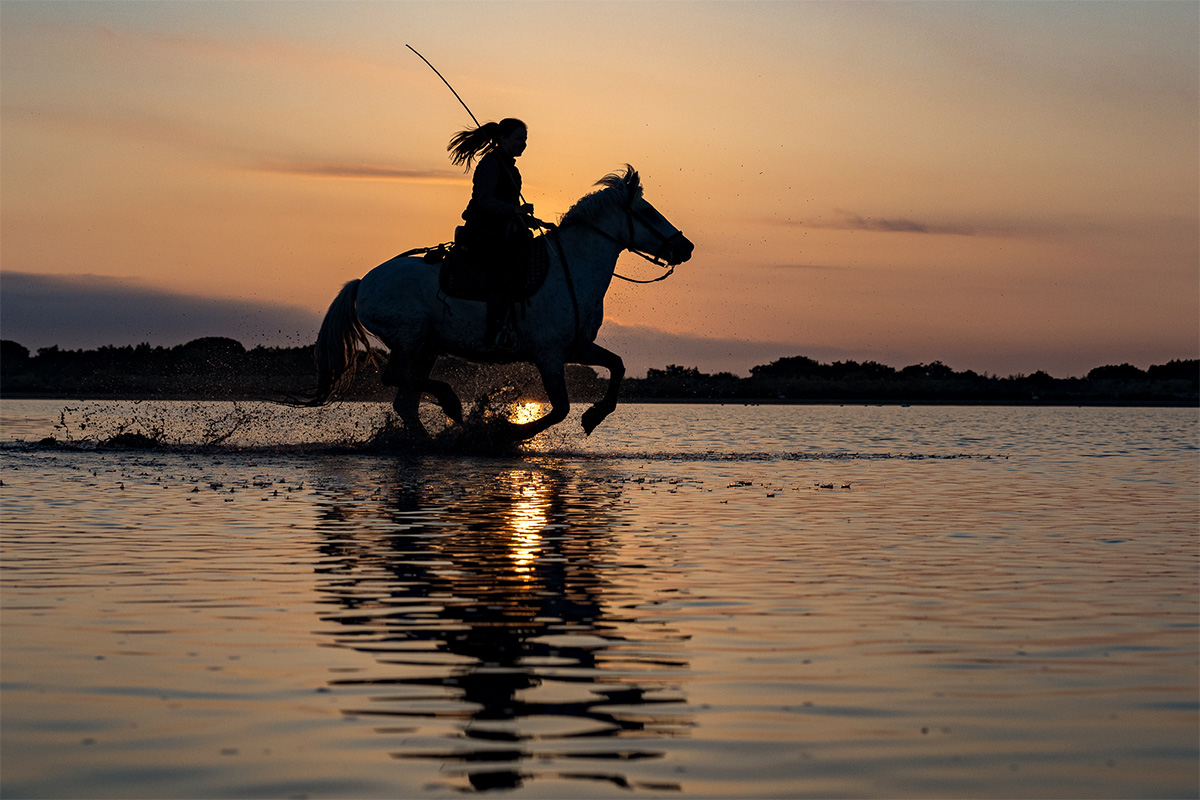Overview
The Camargue is a unique and beautiful region located in the south of France, situated between the Mediterranean Sea and the two arms of the Rhone River delta. It is one of the largest wetlands in Europe and is home to a diverse range of flora and fauna, including wild horses, flamingos, and black bulls.
The Camargue has a rich cultural heritage, influenced by its history as a crossroads between France, Spain, and Italy. Its traditional festivals, such as the Gypsys pilgrimage of Sainte Maries de la Mer, showcase the region’s unique culture and traditions, including bull games and horsemanship.
We will bring you closer to the authentic beauty and culture of Camargue. Trip leader, (and French native), Patrick Fiouzian, will be partnering with a local expert photographer in sharing their knowledge of the wonderful events you’ll be photographing, providing guidance as needed.
Itinerary
Day 1 (May 21): Arrival in Saintes Maries de la Mer. You’ll be transported from Montpellier (MPL) airport to our resort for orientation and dinner. Overnight in Saintes Maries de la Mer.
Day 2 (May 22): In the early morning, we’ll photograph the Camargue horses in the wetlands. The sight of Camargue horses running in wetlands is a breathtaking and iconic image associated with the Camargue region. These majestic creatures, native to the area, possess a unique and captivating beauty that perfectly complements the stunning coastal landscape.
Camargue horses are known for their distinctive characteristics and their ability to adapt to the rugged terrain and marshy environments of the Camargue. They are medium-sized horses, typically standing between 135 to 150 centimeters tall. Their most recognizable feature is their creamy white or gray coat, which contrasts beautifully against the azure waters and sandy shores of the Camargue landscapes. These horses often run in groups, exhibiting a sense of camaraderie and a natural herd dynamic.
We’ll return to our resort for breakfast and lunch and get a little rest before we head out for an action-packed afternoon.
Forget everything you know about traditional bullfighting. This is something different, something unique to Camargue. In this thrilling spectacle, it’s all about agility, bravery, and a deep respect for the majestic black bulls that call this place home. As the gates swing open, a group of daredevils known as ‘raseteurs’ enter the arena, dressed in crisp white outfits. With lightning-fast reflexes, they dart towards the charging bull, armed with nothing but a small hook. Their mission? Capture the rosette tied between the bull’s horns. It’s a high-stakes game of cat and mouse, as the raseteurs leap and twist, narrowly avoiding the bull’s powerful horns. It’s a display of pure skill and bravery, a dance between man and beast that showcases the incredible bond between them.
The Camargue bulls have a significant role in the local culture and traditions of the region. These traditional bull games, which differ from the Spanish-style corrida, are known as ‘courses camarguaises.’ The course camarguaise is not about harm or domination—it’s a celebration of tradition, strength, and the spirit of the Camargue. It’s a chance to witness an age-old spectacle that has captivated generations, where the bulls are revered and the raseteurs are hailed as heroes. We will navigate around the arena to get the best light and anticipate the bull and raseteur moves to capture the most amazing images.
We’ll return in the evening and have dinner at the resort. Overnight in Saintes Maries de la Mer.
Day 3 (May 23): Dedicated to the conservation and protection of the Camargue’s biodiversity, the Parc Ornithologique du Pont de Gau is a bird sanctuary that specifically focuses on flamingos and other wetland species. The primary flamingo species found here is the Greater Flamingo (Phoenicopterus roseus) but the sanctuary is a refuge for many species living totally in peace together. We will witness flocks of birds coming from their sleeping areas for food and company. We’ll experience the flamingos flying and gliding in the morning sun.
For breakfast and lunch, we’ll return to the resort – we’ll have a break before heading back out again in the afternoon.
Sunset brings a different feeling, and we will have the opportunity to witness the mesmerizing sight of these beautiful Camargue horses once more on the beach with sunset lights. Note that we will provide boots to get knee-deep in water and mosquito repellent as needed. We’ll return to the resort for dinner. Overnight in Saintes Maries de la Mer.
Day 4 (May 24): Camargue bulls are a robust and hardy breed with specific physical characteristics. They are medium-sized bulls, and both males and females possess long and curved horns, which are an important element of their visual appeal. Camargue bulls have adapted well to the unique conditions of the Camargue region: the Camargue is a vast wetland area with marshes, ponds, and lagoons – the bulls graze on the natural vegetation found in the area. They are able to tolerate the saline conditions of the Camargue, including consuming the salty water and grazing on salt-rich grasses.
These black bulls have become an emblem of the Camargue, and efforts are made to protect and preserve the Camargue bulls and their habitat. Organizations and associations in the Camargue work towards sustainable breeding practices, genetic diversity, and the promotion of responsible practices in bull-related events. We will photograph the bulls at sunrise along with their guardians. We’ll return to the resort for lunch.
The vibrant town of Saintes-Maries-de-la-Mer becomes the epicenter of a unique and colorful event in the spring—the Gypsy Pilgrimage, also known as the Pèlerinage des Saintes Maries. This pilgrimage, deeply rooted in history and folklore, is a celebration of Romani culture and a gathering of Romani people from all over Europe. The event centers around the revered relics of the three Marys—Saint Mary Salome, Saint Mary Jacobe, and Saint Sarah—said to have arrived by boat on the shores of Saintes-Maries-de-la-Mer in biblical times.
The Romani pilgrims, dressed in their traditional attire, make a lively and colorful procession through the streets, carrying the statues and relics of the Marys. The atmosphere is filled with music, dancing, and joyful celebrations, and holds deep significance for the Romani community, representing a time for spiritual renewal, family reunions, and cultural pride. It is a moment to honor their heritage, pay homage to the Marys, and seek blessings and protection for the year ahead. We will start the day with an orientation to prepare for the day ahead so we get the best locations for portraiture and capturing the event.
Although schedules are fluctuating, we will work to capture & experience these key events:
Arrival of the pilgrims: They’ll be dressed in traditional attire, often arriving in decorated carriages.
Church Ceremonies: At the Église des Saintes Maries, religious ceremonies are held throughout the day. These ceremonies include prayers, blessings, and the lighting of candles in honor of the Marys.
The Festive Atmosphere: The streets of Saintes-Maries-de-la-Mer come alive with music, dance, and colorful celebrations. Romani families and visitors engage in lively conversations, exchange stories, and enjoy traditional Romani music and performances.
Trading and Crafts: Market stalls line the streets, offering a wide array of Romani crafts, jewelry, clothing, and culinary delights. Visitors have the opportunity to explore and purchase these unique items while immersing themselves in the Romani culture.
Procession to the Sea: One of the highlights of the pilgrimage is the procession to the sea. Pilgrims carry the statues and relics of the Marys to the shore, accompanied by music, singing, and dancing. The statues are then blessed in a symbolic act to the Marys for their arrival in Saintes-Maries-de-la-Mer.
We’ll finish up the day at the Parc Ornithologique, exploring the reserve on foot to observe and photograph the flamingos in their natural habitat. At sunset, we will observe the flocks of birds departing for the day, a mesmerizing sight in this magical place. We’ll return to the resort for dinner. Overnight in Saintes Maries de la Mer.
Day 5 (May 25): Stallions in the Camargue can often be observed engaging in various social behaviors, including playing and fighting. These activities are natural and play important roles in establishing dominance and hierarchy within their herds. In the early morning, we will go to a private area and photograph the stallions. Note: The stallions’ performance is not guaranteed and depends highly on their mood. Their guardians will know how best to prepare them for being active, giving us the best chance to capture these magnificent animals.
The pilgrimage events continue, and in the late morning, we will witness the bringing to the sea of Saint Mary Salome, Saint Mary Jacobe, and the processions which come along. This day will be less crowded, giving you the opportunity to get closer and choose alternate locations for your photography. We’ll return to the resort for breakfast and lunch, and the afternoon is at your leisure. Overnight in Saintes Maries de la Mer.
Day 6 (May 26): This morning, we will photograph the Camargue horses on the beach. When you witness these horses running along the beach, it is a sight to behold. Their muscular bodies move with grace and power, their manes flowing in the wind. With their heads held high and their tails streaming behind them, they create an image of untamed freedom and natural elegance. The horses often run in groups, a nod to their camaraderie and herd nature.
The running the Camargue horses do on the beach also serves a practical purpose – it helps to strengthen their muscles, improve their endurance, and maintain their physical well-being. It is a way for the horses to release energy and express their inherent wildness. We’ll have the morning to compose and capture images here. We’ll return to the resort for rest, editing, and lunch.
This evening we will have a Gypsy party with music, dances and local food. Overnight in Saintes Maries de la Mer.
Day 7 (May 27): Salins du Midi is a salt production company that operates saltworks spanning 10,000 hectares, making it one of Europe’s largest salt production sites. The salt pans serve as important habitats for numerous bird species, including flamingos, herons, and other waterfowl. The company works in collaboration with conservation organizations to protect and preserve the natural ecosystem of the Camargue while carrying out salt production activities. The salt pans are shallow evaporation ponds filled with brine, which gives them a mesmerizing palette of hues. Depending on the concentration of salt and the angle of the sunlight, you may witness shades ranging from vibrant blues and turquoise to soft pinks and purples. These captivating colors are a result of the interplay between the water, salt crystals, and the surrounding landscape.
One of the best aspects of the salt pans is their reflective properties. The still water acts as a mirror, reflecting the sky, clouds, and surrounding elements. Experimenting with different angles and perspectives can lead to captivating compositions, where the reflection and the actual salt pans blend seamlessly. We’ll spend the morning photographing the salt pans and the surrounding area.
At sunset, we’ll visit the wetlands again to capture more horses, guardians, and other wildlife. Our evening will be spent at the resort for dinner and rest. Overnight in Saintes Maries de la Mer.
Day 8 (May 28): This morning we’ll meet local models in traditional clothes, as well as our beautiful horses and guardians, spending time with them to capture beautiful portraits.
We’ll return for breakfast and editing, getting ready for the evening stallions session.
Our last sunset session will be with the Stallions and landscapes of the Camargue, and we’ll work to capture these powerful animals moving and playing with each other. At the resort, we will gather for a farewell dinner. Overnight in Saintes Maries de la Mer.
Day 9 (May 29): Guests will be transported to the Montpellier (MPL) airport for their flights home.

